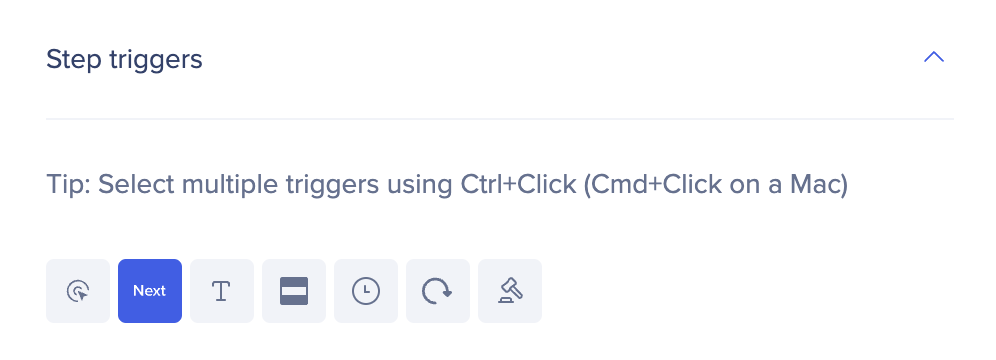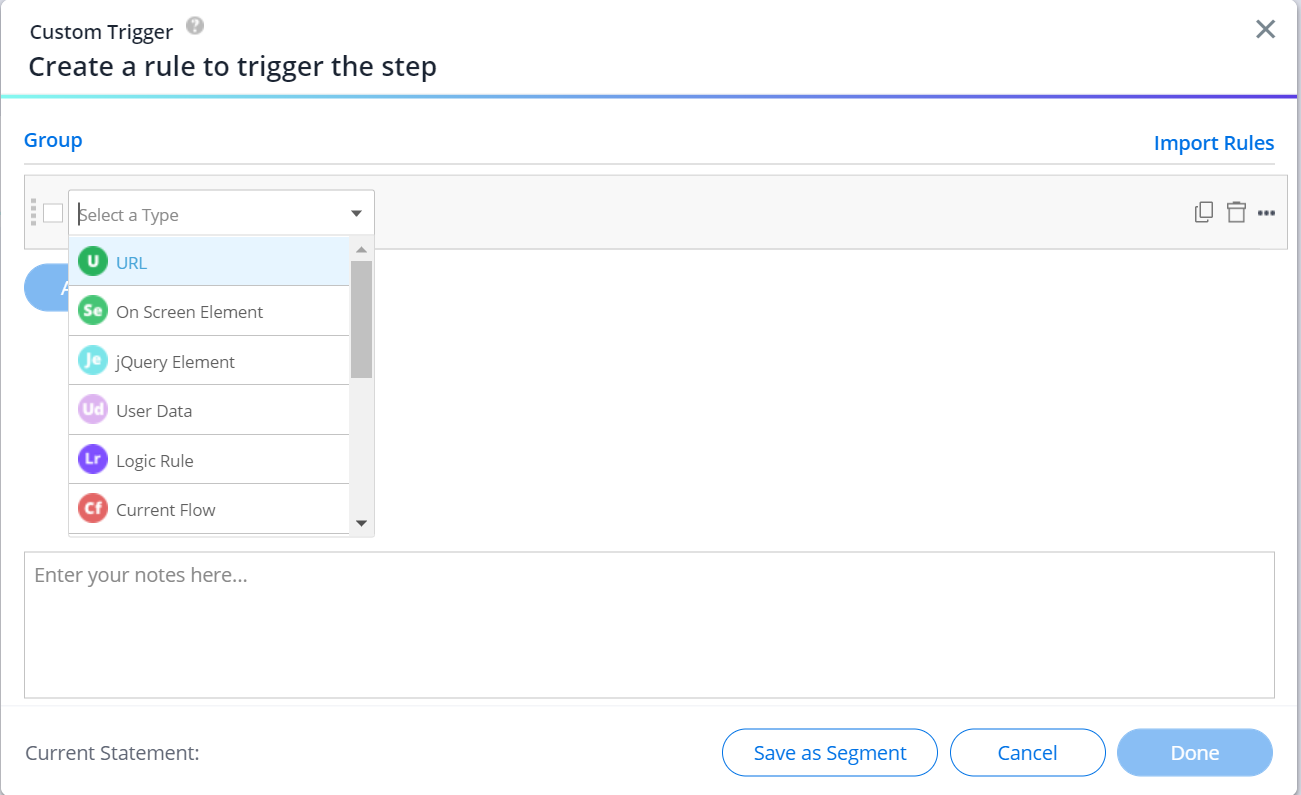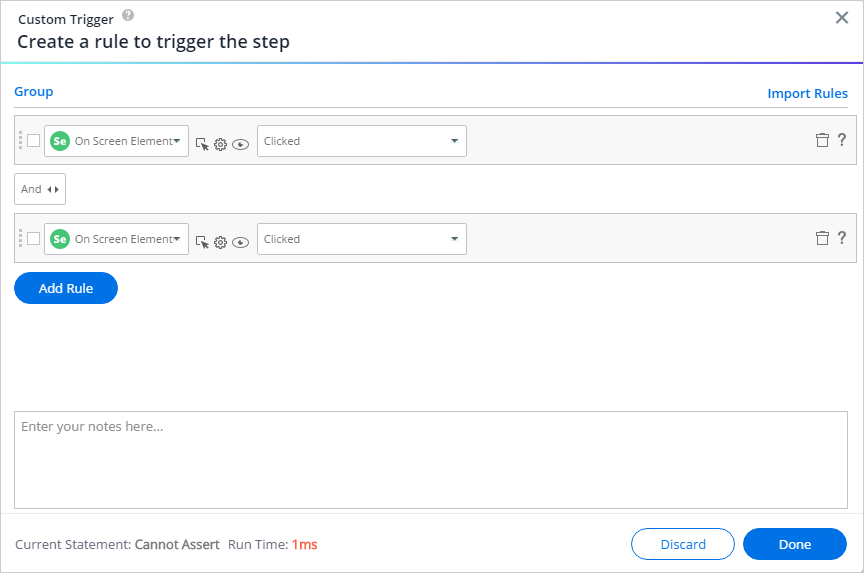Brief Overview
Custom triggers give users flexibility to complete a step in more ways than one. With custom triggers, you can select additional elements on the screen that will trigger the next step.
Your Smart Walk-Thru is made of steps and each step is triggered by user action. WalkMe has default trigger types already built for you, or you can create your own custom triggers.

Custom triggers help you streamline a process within a Smart Walk-Thru if there is more than one way for a user to get to the next step. It can also reduce clicks for the user!
To learn more about the different step trigger types, check out the Smart Walk-Thru introduction article.
Examples of when to use a Custom Trigger
Scenario 1 - Verifying an element: You can create a custom trigger that checks if a valid e-mail address is entered before the Smart Walk-Thru proceeds to the next step without having to click Next on the balloon.
Scenario 2 - Multiple ways to proceed: There are two Save buttons on the page, both of which could trigger the next step, but if the user selects the Save button that was not originally selected as the element for that step, the Smart Walk-Thru stops playing. To accommodate for this, the custom trigger allows for either one of the Save buttons to be clicked.
How It Works
A custom trigger is created using the rule engine and can be added to any step. WalkMe will play the next step in the process if the custom trigger's rules are true.
A step can have up to 20 custom triggers.
Add a Custom Trigger
Follow the steps below to create a custom trigger:
- Click on the step to open up the step settings

- In the Behavior tab, select custom trigger

- The rule engine will open

- Add rules that determine when the next step should play
- In this example, the step will play only when two on screen elements have been clicked

- Click Done
- Name your custom trigger
- Click Done
- Repeat steps 1-7 as necessary up to 20 times per step.
- Your Custom Triggers will be reflected in the SWT map, alongside other configured triggers:

Technical Notes
- Custom trigger's name is limited to 50 characters
- Desktop/Mobile systems do not support multiple custom triggers
- At this time, Enter and other keyboard keys are not supported as custom triggers
- Custom triggers that have steps following it cannot be deleted
- To delete the step, either the custom triggers should be removed or the steps following it should be deleted
- If you want to delete a custom trigger, make sure that only 1 linked trigger has steps after the trigger. If you have more than 1 trigger with steps after it, then you will not be able to delete the custom trigger. For example, if you have Click+Next+Custom, and you have steps under "Click" and "Custom", then you can't remove "Next".
- Custom triggers need to be evaluated on the page where the balloon appears. If you want to evaluate it on another page, you should create a peer step and link to it.







